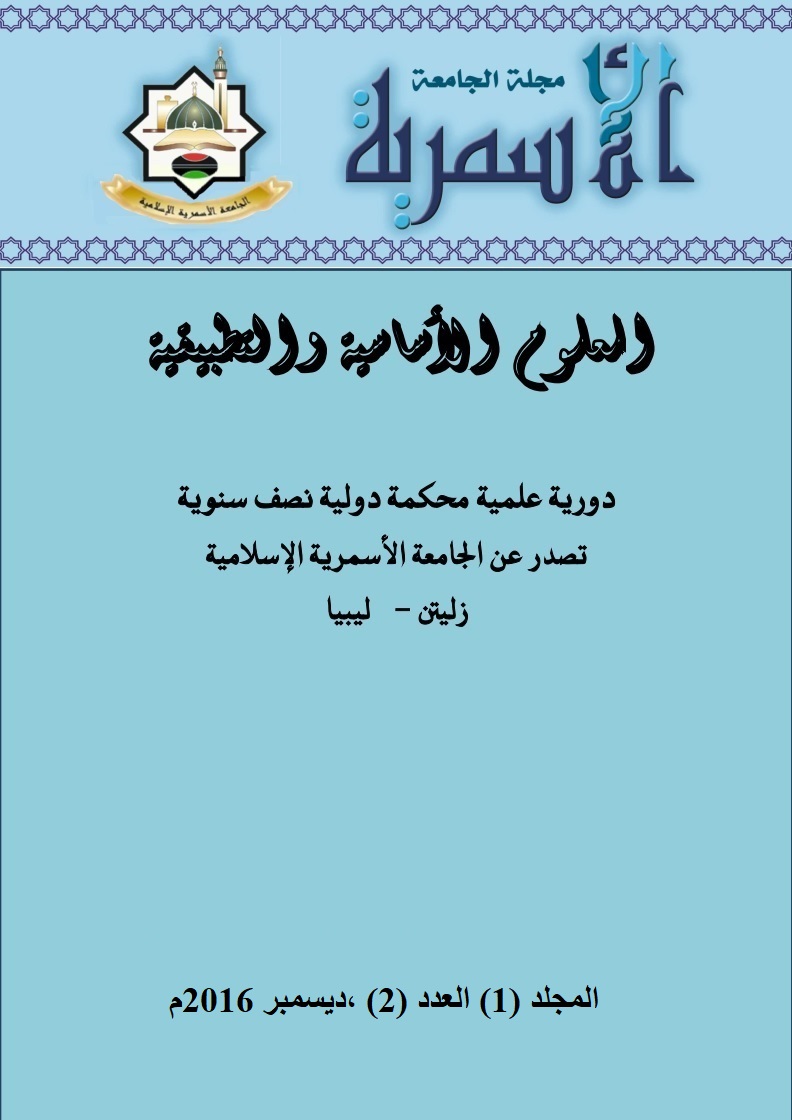Electrochemical and Mechanical Properties of Surface Films and Their Relation To the Stress Corrosion Cracking of Steels
DOI:
https://doi.org/10.59743/aujas.v1i2.1559الملخص
Electrochemical and mechanical techniques were used to grow films and study some of their properties. Polarization curve measurements were performed on Cr-Mo alloy steel specimens in carbonate/bicarbonate solutions at 75 ˚C .Films were grown at -700, -725, -750, -800 and -850 mV at 75 ˚C. It was found that stress corrosion cracking (SCC) was most likely to occur between -650 and -750 mV (SCE). AC impedance and nano- hardness of the films were measured. The results showed that the impedance of the films grown within (SCC) range had diffusion control behavior which indicated passivity whereas the impedance of the films grown outside the (SCC) range showed charge transfer behavior which meant that they were not passive. This result implies that the passive films might cause SCC in Steels. The films grown within the (SCC) range had relatively high hardness compared to those grown outside the range which indicated that the films grown within the range were brittle and might induce SCC in steels.
التنزيلات
المراجع
Congleton, J., & Parkins, R. N. (1988). Stress corrosion cracking of steel in high temperature DOI: https://doi.org/10.5006/1.3583940
water. Corrosion, 44(5), 290-298.
Congleton, J., Shoji, T., & Parkins, R. N. (1985). The stress corrosion cracking of reactor
pressure vessel steel in high temperature water. Corrosion Science, 25(8-9), 633-650. Fontana, M. G. (2005). Corrosion engineering. Tata McGraw-Hill Education.
Gao, X., Wu, X., Zhang, Z., Guan, H., & Han, E. H. (2007). Characterization of oxide films
grown on 316L stainless steel exposed to H2O2-containing supercritical water. The Journal of supercritical fluids, 42(1), 157-163.
Jones, R. H., Ricker, R. E., & Jones, R. H. (1992). Mechanisms of Stress Corrosion Cracking in Stress Corrosion Cracking—Materials Performance and Evaluation. Materials Park, OH: ASM International, 1. DOI: https://doi.org/10.31399/asm.tb.sccmpe2.t55090001
Katada, Y., & Nagata, N. (1985). The effect of temperature on fatigue crack growth behaviour of a low alloy pressure vessel steel in a simulated BWR environment. Corrosion Science, 25(8-9), 693-704.. DOI: https://doi.org/10.1016/0010-938X(85)90006-X
Nazarov, A., Vivier, V., Thierry, D., Vucko, F., & Tribollet, B. (2017). Effect of Mechanical Stress on the Properties of Steel Surfaces: Scanning Kelvin Probe and Local Electrochemical Impedance Study. Journal of The Electrochemical Society, 164(2), C66-C74. DOI: https://doi.org/10.1149/2.1311702jes
Newman, R. C., & Procter, R. P. M. (1990). Stress corrosion cracking: 1965–1990. British DOI: https://doi.org/10.1179/000705990799156373
Corrosion Journal, 25(4), 259-270.
Parkins, R. N. (1972). Stress corrosion spectrum. British Corrosion Journal, 7(1), 15-28. DOI: https://doi.org/10.1179/000705972798323350
Parkins, R. N. (1985). Significance of pits, crevices, and cracks in environment-sensitive DOI: https://doi.org/10.1179/mst.1985.1.6.480
crack growth. Materials science and technology, 1(6), 480-486.
Schütze, M. (1997). Protective oxide scales and their breakdown. Wiley.
Stahle, R. W., Hochmann, J., McCright, R. D., Slater, J. E., & Shatynski, S. R. (1979). Stress corrosion cracking and hydrogen embrittlement of iron base alloys. Journal of The Electrochemical Society, 126(5), 215C-215C.. DOI: https://doi.org/10.1149/1.2129122
Turnbull, A. (1993). Modelling of environmental assisted cracking, Corros. Sci., 34: 921–969. DOI: https://doi.org/10.1016/0010-938X(93)90072-O
التنزيلات
منشور
إصدار
القسم
الرخصة
الحقوق الفكرية (c) 2016 مجلة الجامعة الأسمرية

هذا العمل مرخص بموجب Creative Commons Attribution 4.0 International License.
تتعلق الحقوق بنشر وتوزيع البحوث المنشورة في مجلة الجامعة الأسمرية، حيث توضح للمؤلفين الذين نشروا مقالاتهم في مجلة الجامعة الأسمرية، كيفية استخدام أو توزيع مقالاتهم، والاحتفاظ بجميع حقوقهم في المصنفات المنشورة، مثل (على سبيل المثال لا الحصر) الحقوق التالية:
- حقوق الطبع والنشر وحقوق الملكية الأخرى المتعلقة بالمقال المقدم، مثل حقوق براءات الاختراع.
- استخدام البحث المنشور في مجلة الجامعة الأسمرية في الأعمال المستقبلية الخاصة بالمؤلفين، بما في ذلك المحاضرات والكتب، والحق في إعادة إنتاج المقالات لأغراضهم الخاصة، والحق في الأرشفة الذاتية لمقالاتهم.
- الحق في الدخول في مقال منفصل، أو للتوزيع غير الحصري لمقالاتهم مع الإقرار بنشره الأولي في مجلة الجامعة الأسمرية.
الحقوق الفكرية: وفق الرخصة الدولية للأعمال الإبداعية المشاعة، النسخة 4.0.
بيان الخصوصية: سيتم استخدام الأسماء وعناوين البريد الإلكتروني التي تم إدخالها في موقع مجلة الجامعة الأسمرية للأغراض المذكورة فقط والتي استخدمت من أجلها.











